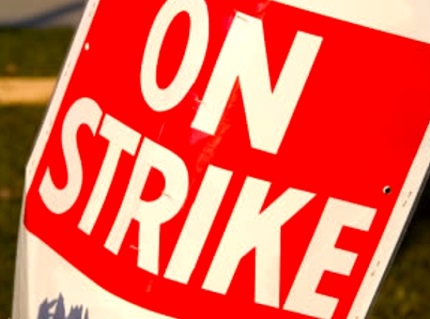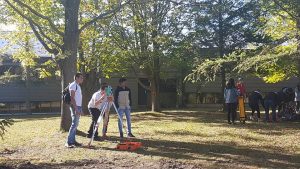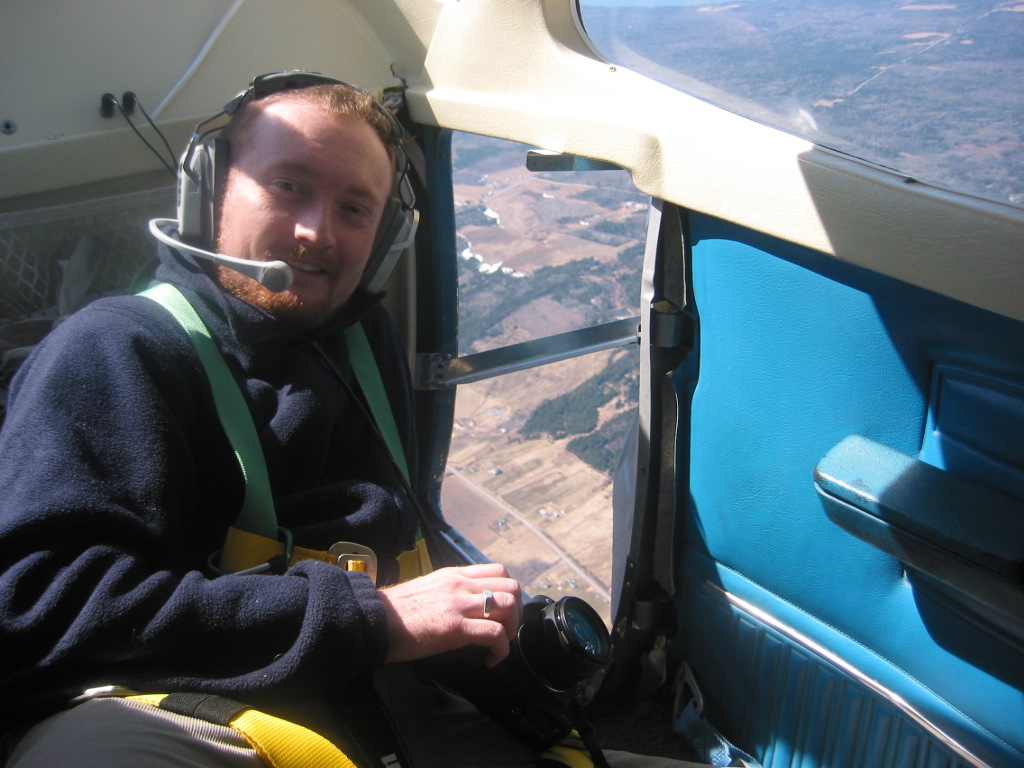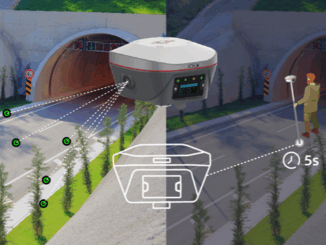
GoGeomatics Canada is a community. Right now a part of our community is hurting and under stress. Students across Ontario have been dealing with a month long strike by faculty at Ontario’s colleges and that includes students in the various GIS programs.
College faculty began voting Tuesday on a contract offer. Since the 15th of October thousands of college professors, instructors, and librarians have not been to work. This has meant that GIS students in programs across Ontario have not been able to get the face-to-face instruction they signed up for.

GoGeomatics contacted two students at Fleming College to ask them about their experience and how they are dealing with the situation. At the students request we’ve changed their names. We conducted the interview by email and sent the same questions to both students.
GoGeomatics: Can you tell me a little about yourself? Where are you from and what is your educational background?
Janice: My name is Janice, I’m a post-graduate student in the GIS and Cartography program at Fleming College’s Frost Campus. My educational background comes from Trent University where I obtained double major in the sciences.
Peter: I’m from Peterborough originally, I have a Bachelor’s Degree in Environmental Science from Carleton and a Master’s Degree in Forestry from Lakehead, as such I’ve also lived in Ottawa and Thunder Bay.
GoGeomatics: Why did you decide to pursue a career in GIS? What would you like to do after you graduate?
Janice: After my archaeology and forensic anthropology degree, there was only one thing to do, take my educational experiences and apply them by means of cartography and GIS. After I graduate, I plan on using my GIS and Cartography knowledge to map cultural, heritage, and archaeological sites, and analyze the data output. One day I would also like to teach at the University and or College level. This is because of my experiences with my professors at both Fleming College (Lindsay and Peterborough) and Trent University (Durham and Peterborough).
Peter: I was first introduced to GIS during my undergrad, I didn’t know much about it at the time, but those courses ended up being the some of the most interesting of my entire course load. I furthered that experience during my Masters, which had a heavy GIS based focus. I don’t have a particular path in mind after I graduate, I hope that the variety of skills I develop through this program along with my educational background will help me get a permanent/career path position where I can apply some of what we’re learning here.
GoGeomatics: Fleming is one of the best GIS schools in Canada. What made it the choice for you?
Janice: Simple, prior to attending Trent University I was attending Fleming College’s Sunderland Campus for their General Arts and Sciences University Transfer. Aside from the amazing programs and professors Fleming has, being there gave me a newfound sense of self. After graduating from Trent University, I had one plan of action, get a GIS and Cartography Post-Grad. As far as I was concerned there was no better place to do this then at Fleming College.
Even now, as the strike rounds into its 5th week, I stand by my choice. Our professors love what they do, and they want to prepare us with an education that will translate into the workforce and the real world of GIS applications, and cartography.
Peter: Proximity. I was already living at home in Peterborough, and Fleming is close enough to commute to. Additionally, with multiple degrees and plenty of associated OSAP debt I couldn’t really afford to make a major move.
GoGeomatics: How was your educational experience at Fleming going GIS until the strike started?
Janice: Amazing! The learning experience itself was overwhelming at first, but with the help of the program coordinators and our professors I eventually came to love the workload. Although we are a ‘condensed’ course, there was a ‘method to the madness’ before the strike.
Peter: In a word, busy. In the weeks leading up to the strike I was completing somewhere in the range of 60-80 hours of schoolwork and class per week, learning multiple languages simultaneously (Python, SQL, HTML, & CSS), and completing what seemed like an endless string of assignments. A valuable, but strenuous educational experience.

Photo Credit: Storm Campbell
GoGeomatics: Did the school or the instructors prepare you and your classmates for the strike?
Janice: Absolutely! Given the short notice regarding the strike, and the lack of details on its potential length, our professors did everything they could to prepare us. Each professor played their part in ensuring we had materials to study or tried to provide access to the labs and quizzes online. Other than computer glitches, many of us students agree that the professors in the GIS programs (Cartography and Applications Specialist) at Fleming did everything in their power to maintain stability going forward during the strike.
Peter: The instructors certainly did, in fact many of the students effectively carried on as though school was still in session right into reading week. We had an exam, quizzes, and assignments to complete regardless of the strike. With most of those now complete or near complete we also have some training and project planning we can work on, but will be nearing the limit of what we can effectively learn or work on without actual instruction sooner rather than later. As for lab access we probably have more than we did before the strike, the GIS/computer labs have been open every day and there are no classes competing for time in the rooms.
GoGeomatics: How are the other students in your GIS program feeling? Have you pulled together or is everyone working on their own?
Janice: I personally feel as if our group has pulled together. Prior to the strike we had established a class email communication group and Facebook page. Regular group communication has certainly assisted in keeping the flow of information going, and through these groups we have been able to assist each other with the lab work that was released prior to the strike. Of course, we miss having the professor’s direction, but have managed to pull together as a class and as friends.
I do not deny that there is an overwhelming sense of confusion and of being in limbo for many of us. Some have returned to our hometowns and are spending this time with family and friends. We are just waiting it out at this point, reading ahead.
Peter: There is some frustration. At first the strike provided relief, the weeks prior to reading week were some of the most difficult I’ve completed during any of my degrees, so being able to work on assignments without worrying about class was welcome. As it carries on people are becoming worried about losing the semester and burning through their savings while waiting. The financial side affects me less due to living at home, but if you’ve moved to Lindsay for this program or are an international student paying increased fees, I can imagine feeling annoyed. As a child of a union employee (not this one), a beneficiary of union/strike action (everyone is), and a former contract worker (no benefits, no stability), it would be hypocritical of me to not support the strike action. Unfortunately, that can be a difficult position to maintain when you’re one of the ones stuck in the middle.

GoGeomatics: Are you worried you might lose the semester? What is the situation now in terms of completing your program?
Janice: Overall no, I don’t believe that our program coordinators and our professors will allow us to lose an entire semester. We have already missed our scheduled survey camp week, but have been promised it will be rescheduled. Prior to the strike the program coordinator and professors informed us that they would do everything in their power to ensure we did not lose the semester. Therefore, I am placing my trust in them.
Peter: Somewhat, depends on the flexibility of school/program in terms of completing everything. This is a 10-month condensed GIS program, so there should be some wiggle room at the end. I would not be opposed to tacking on a month of fall semester in January and finishing in July as opposed to June. Whether that is a possibility I am unsure. I would be more concerned about further condensing the program to jam in our missing time while maintaining the same timeline. If 60 to 70 hours per week is difficult, 100 hours would be unreasonably so.
GoGeomatics: What changes have you had to make your life to accommodate the reality of trying to get an education during a strike?
Janice: Currently, I’m trying to teach myself using the abundant resources available online through our professors, program page, text books, tutorials, and other sources. From day one we were given many additional resources from each professor, these have made the self-teaching process even easier. Overall, I do miss the classroom experience and the lab lessons that showed us how to practice what we have learned hands on. Having lab time certainly makes GIS applications and cartography program a smoother learning experience.
Peter: Prior to the strike classes and a never-ending flow of assignments kept me coming to campus and up to date. Now my motivation must be entirely self-sourced, a somewhat difficult thing to do when you’re unsure of when you’ll be getting back to school. I manage to get to school most days, and work for at least a few hours on what we’ve been left, but my “maintenance” self-directed education is hardly a replacement for the resource provided by our instructor’s wealth of knowledge and experience in their fields.
Everyone at GoGeomatics Canada is hoping for a speedy resolution to the strike. We thank Perter and Janice for the time they took to share with us their experience as students during the strike. We will follow up with both in the future to see how the story ends.





Be the first to comment